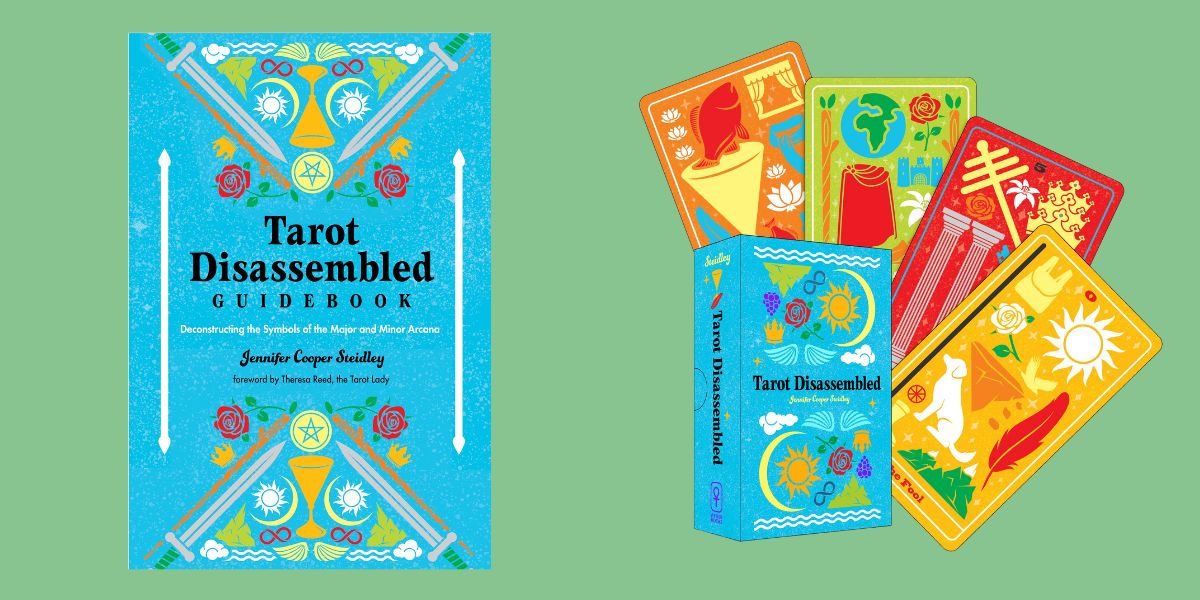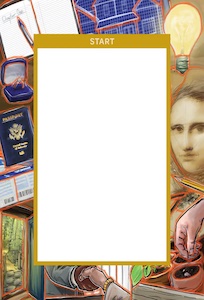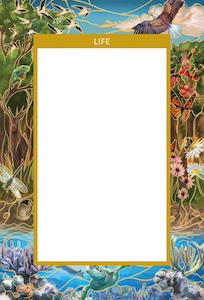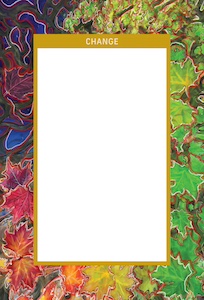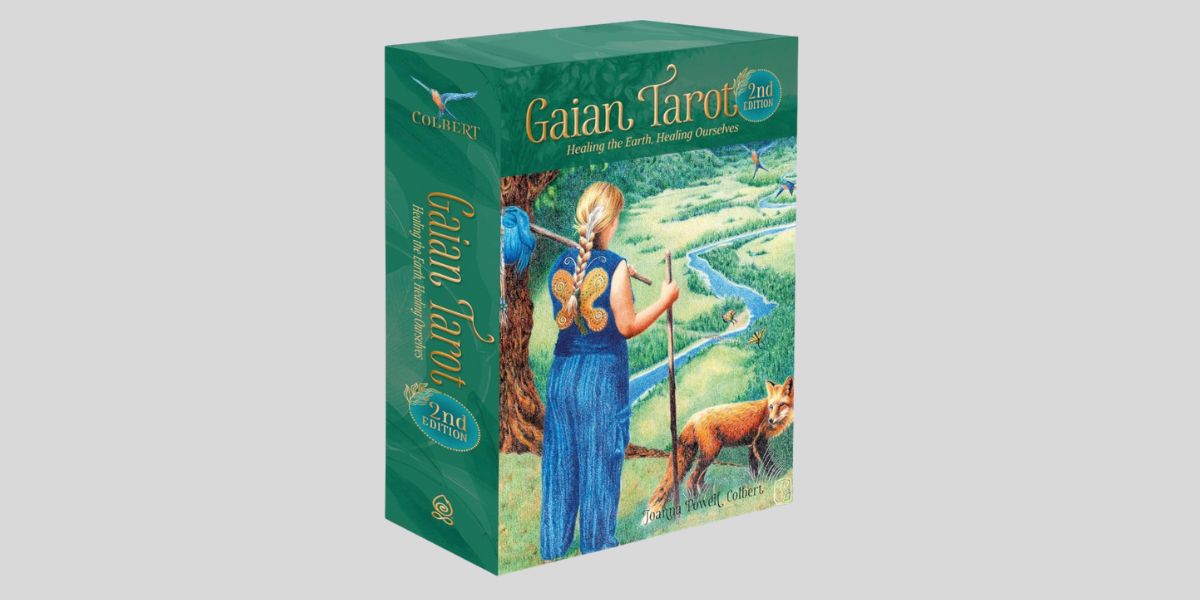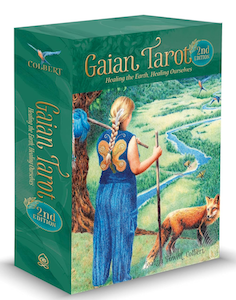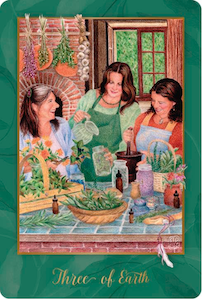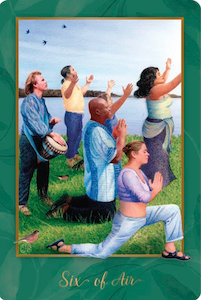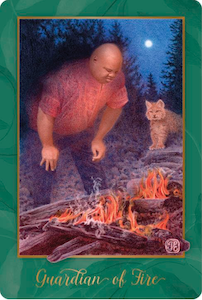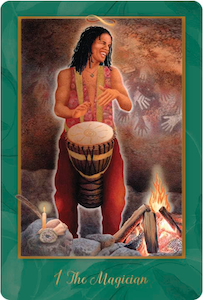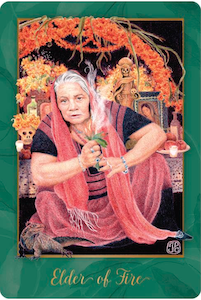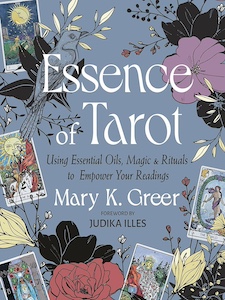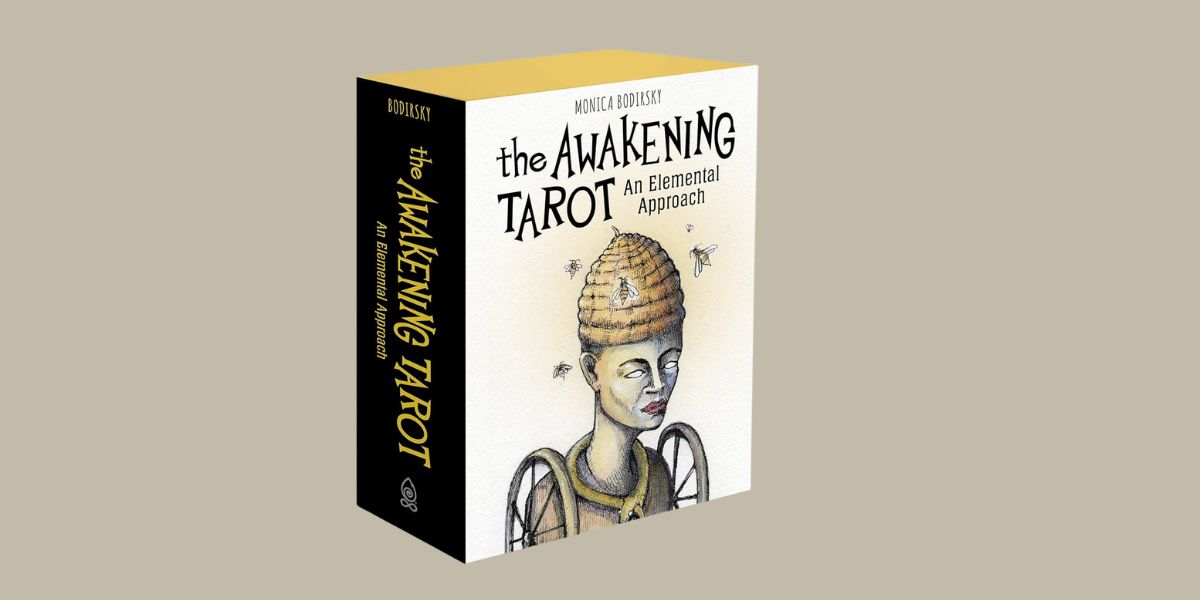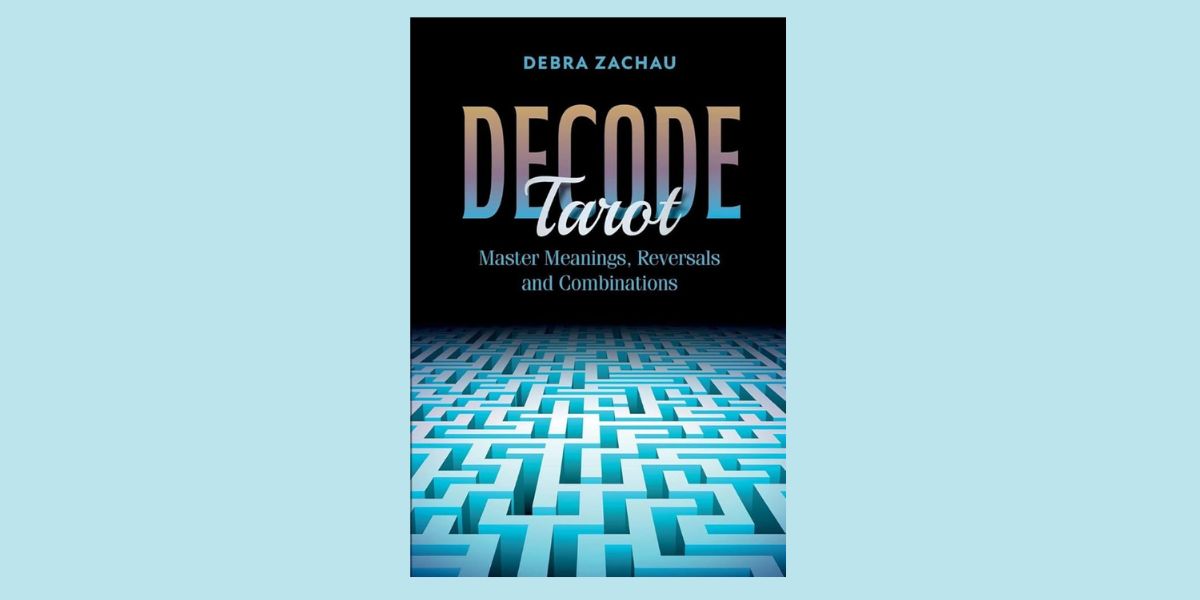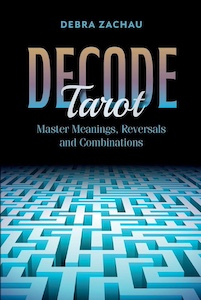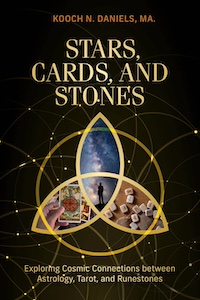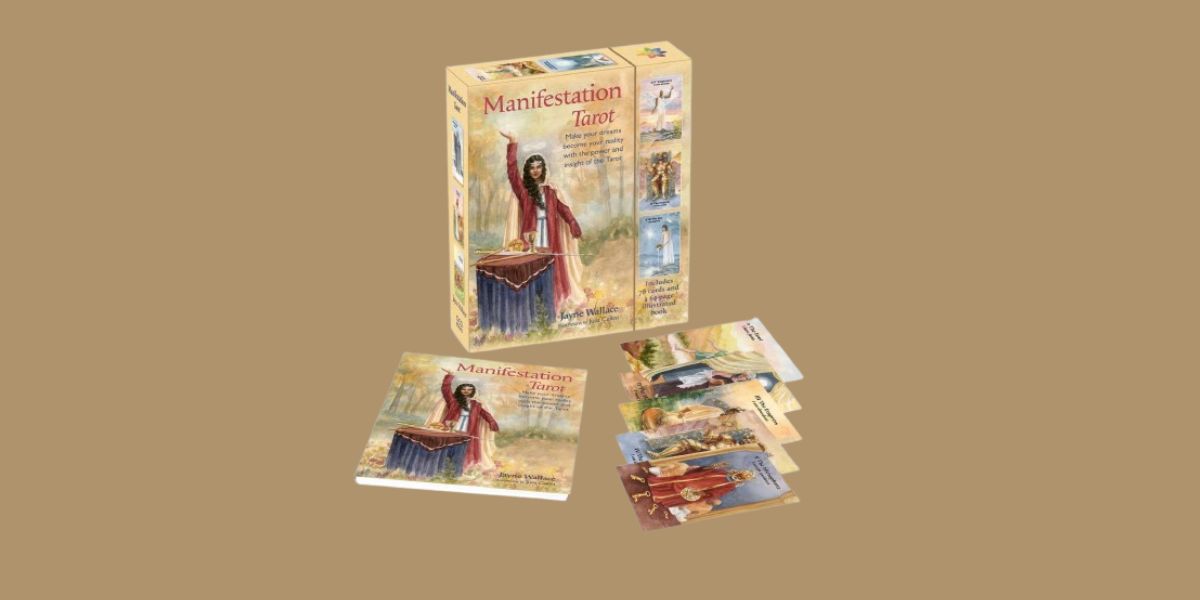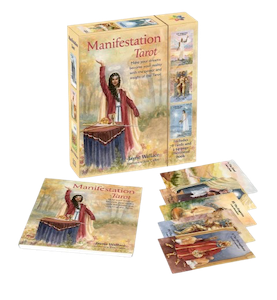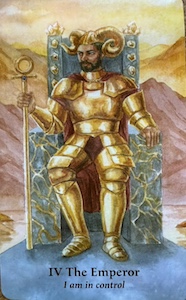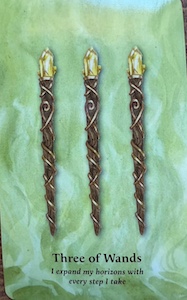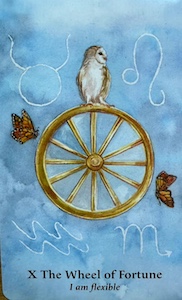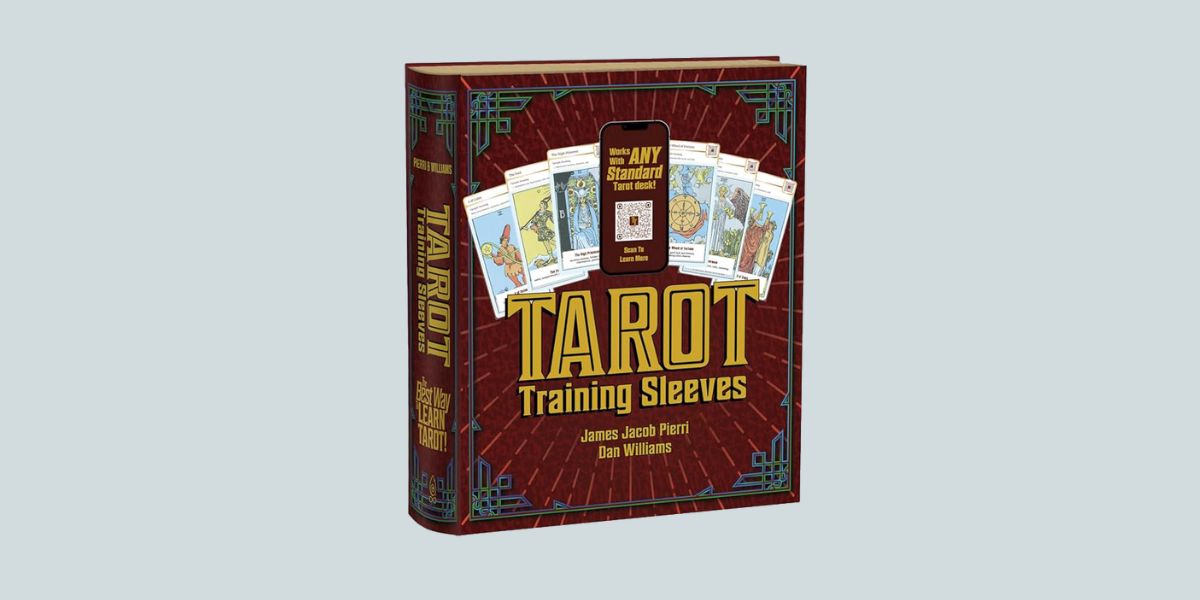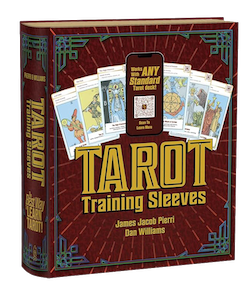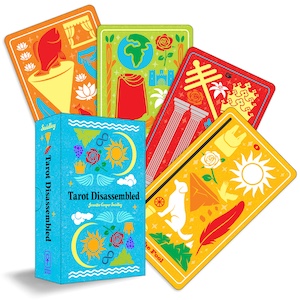
Tarot Disassembled Deck, by Jennifer Cooper Steidley
Weiser Books, 9781578638659, 78 cards, April 2025
Tarot Disassembled Guidebook, by Jennifer Cooper Steidley
Weiser Books, 9781578638642, 280 pages, April 2025
In her groundbreaking deck and companion guidebook, Jennifer Cooper Steidley has taken the traditional symbols of the Rider-Waite-Smith (RWS) deck and broken them apart, much like deconstructing a puzzle. Tarot Disassembled Deck presents each art element from each card and shares the meaning, history and myth. This deck challenges conventions by isolating the symbols that make up each card rather than presenting the usual composite imagery.
Jennifer Cooper Steidley is a graphic artist who received her first tarot deck in college over thirty years ago. Since that time, she has collected more decks and created a few herself. One day, while watching her son take apart his sandwich into the individual parts, she thought about how this might relate to the symbols of the Major and Minor Arcana of tarot decks, inspiring the idea for this deck and guidebook. Learn more about her on her website.
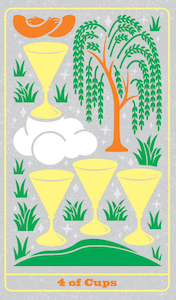
What really appeals to me about this deck is how the art style allows users to meditate on specific elements without the distraction of extraneous details. The minimalist yet visually captivating style draws attention to the essence of each card’s archetype, enhancing one’s ability to connect intuitively with their meanings.
The artistic design of the cards is nothing short of extraordinary. Combining modern aesthetics with an air of mysticism, the deck feels both approachable and profound. Each symbol is thoughtfully rendered, inviting the reader to explore its significance within the context of the card and the larger narrative of the tarot. This makes the deck particularly appealing for study sessions, group discussions, or personal reflection.
For example, on the Star Card, Steidley features: star, ibis, green landscape, flowers, water jug, flowing water and tree. If you place a traditional RWS star card alongside Steidley’s star card, you begin to see how the deck creator deconstructs the RWS artwork to reveal the individual symbols.
In fact, Steidley suggests that card readers take a RWS deck and use it along with Tarot Disassembled Deck. Her unique art style brings the symbols to the forefront, allowing the imagery to speak to the reader in new ways. Interesting to note: Steidley does not feature any people in any of the cards.
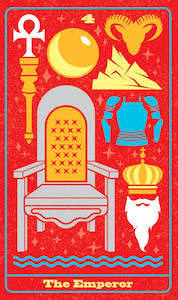
Available separately is the Tarot Disassembled Guidebook, which serves as an invaluable companion for decoding the rich tapestry of symbols presented in the cards. Written in an engaging and accessible tone, the guidebook offers detailed explanations of each card’s symbolism, history, and potential interpretations. She also includes two spreads and exercises for working with the cards.
For each card, Steidley presents keywords, astrological associations, symbolism, and what she calls “Quick Takes.” This is a summary of two or three sentences that expresses the essence of the card. She also includes a brief meaning for a reversed card. In the back of the book, Steidley includes a three-page index, so that the reader can look up any symbol on its own:
“When you find a symbol that you’re particularly struck by, please refer to the index of symbols at this back of the book to see where else it occurs.”1
What sets this guidebook apart is its emphasis on encouraging readers to develop their own intuitive connections. While it provides a solid foundation of traditional meanings, it also invites exploration and personal interpretation, making it a versatile tool for readers of all levels. The inclusion of exercises and prompts further enhances its utility, ensuring that users not only learn but also experience the tarot in a deeply personal way.
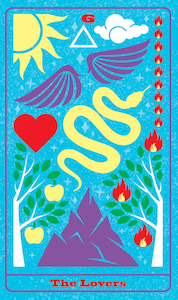
I took the deck and guidebook to my Friday Coffee & Cards group. My friends enjoyed this fresh approach to tarot. One seasoned tarot reader loved the rich information from the guidebook. Another friend who is new to tarot loved how easy it was to read the symbols on the cards. She also enjoyed the wisdom from the guidebook. She drew the Page of Wands and focused on the salamander.
In the guidebook, she learned that this creature represents “fire, renewal, regeneration and transformation.”2 She shared that she felt as if she had “been through the fire” at work recently! On the other side of the upheaval, she learned of a promotion and understood that the card was confirming her transformation and new opportunities.
I found it interesting that Steidley has not made a combination deck and guidebook available for purchase. This deck works best with the guidebook, as there is no “little white book” with the deck. As a seasoned reader, I am comfortable working with the deck alone, but a novice might be lost. If you have both the deck and guidebook, as I do, it’s easy to work with the cards. However, if you purchased the guidebook alone, the black and white art images of each card are fairly small, and the lack of color may make it hard to follow along.
This deck and guidebook bridges the gap between academic study and intuitive practice, offering a unique lens through which to view the cards. Beginners may find this deck an intriguing way to familiarize themselves with the building blocks of tarot, while experienced readers will appreciate its thought-provoking take on familiar archetypes.
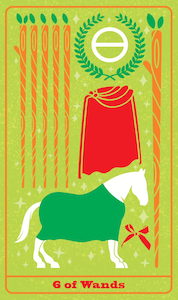
As Steidley says:
“You’ll have the aha moment as you discover one type of transformation leading to another. This is what I’m referring to when I speak of symbols being like onions – tarot, especially, needs to be explored layer by layer, discovering meanings upon meanings.”3
Tarot Disassembled Deck and Tarot Disassembled Guidebook stand out as remarkable and unique additions to the world of tarot, offering both seasoned practitioners and curious newcomers a fresh perspective on the art of divination. Designed with an innovative approach, the deck deconstructs traditional tarot imagery to focus on individual symbols, creating a visual and intellectual pleasure for readers who wish to delve deeper into the layers of meaning behind each card.

PJ Spur is an author, intuitive, spiritual mentor, astrologer, and hypnotist. She does tarot & oracle card readings, natal chart readings, grief coaching, and relationship healing. She also has hosted a weekly “Coffee & Cards” event with her Soul Compass Community for the past four years. Her book Navigating Grief with Grace is available on Amazon. Learn more at www.dearpj.com
